We set off before 9am with Jane and Ian in their car. They had planned the route for us which meant a no stress day for us.
We went past the cave area then on to a monastery, Eremo di Santa Croce di Fonte Avellana, founded in 980
. On the way Jane spotted a ship in a random spot in a paddock. We think it might have been part of a restaurant but who knows…
We were very lucky to have an English speaking guide for our tour of the monastery. We started in the original scriptorium. We then went into a room that had been where the parchments had been prepared for use in the scriptorium, peeked into the library which was the former guest house, saw the cloisters, went into the former chapter house and finished in the original church. We exited through the main church. The monastery is active and we were told that the cells were in a particular area but we couldn't go there.
We were told about three saints who were priors at this abbey over the years. In fact Jane had a book that says that 54 bishops, 4 cardinals, 4 popes and 60 saints came from this monastery.
The scriptorium was fascinating. It was in use as a scriptorium from the 11th century and is one of only three still existing in Europe
. This one was built with dimensions that basically follow the Golden Ratio. Only a close look makes you realise that it is not symmetrical. It has a window placed so the light on the summer solstice falls on a step beneath it and on the winter solstice it shines on the bottom of the entrance door. On one side of the room there are 6 original windows and there are seven on the other so the room acts as a solar clock. The new windows at the bottom were put in during the 16th century.
Our guide said the volumes produced at the monastery were moved to the Vatican museum many years ago. The works in the library were mainly new and for use by scholars as they covered theology, humanist studies and regional studies. Dante had referred to the monastery in one of his works ('Paradise Lost’) and it is believed he visited here.
The cloisters are the oldest part of the monastery dating from the 11th century. It was originally a closed order so there was a circular servery from which food could be served to guests without the monks having to see them
. The ‘tray’ was open on one side but the other side had a full height side so the food could be placed into the tray, then turned to be served to guests. There were 2 arches here that looked gothic but predated this style being used in France and it is believed the style, with the keystone, came from the monks visiting the Middle East.
The history of the chapter house name was explained. This room was light although there are only very small windows. It was used in the morning for a literate monk to read scriptures so the many illiterate monks could hear ‘chapters’. The room was later used for cooking so the frescos on the wall were very faded or covered with the grime of ages. In here was a photo of the Black Madonna which had been presented to the monastery when John Paul II had visited as part of their 1000 year celebrations in the 1980’s.
We were told the temperature in the original church is 15 to 17 degrees all year. This is because it is basically built into the mountain – the floor tiles are laid on the rock and the rock can also be seen at the bottom of the walls.
We then looked around the Antique Pharmacy – which sold a variety of elixirs and other medicines as well as sweets, jam and sauces. We then scrambled up a hill to find a cache – it was only 120m away so of course we had to try it.. Ian found it first and it was a very well made one to show them, and even had a geocoin in it
. Naturally there was a much easier way back once we got there!
By then it was time to return to the monastery – to the refectory for lunch. Jane had been told we could have lunch there with the monks but in fact it was just us and three other visitors. It was a full three course lunch. We started with very nice lasagna. The serving looked big when it arrived but there was none left after we finished. Then we were given a plate of mixed grilled meat and a platter of stuffed tomatoes and potato chips. I especially liked the tomatoes and ate more than my share. There was salad on the table and we ate that after the meat which is the proper order (although we have not followed that before). For dessert there was a bowl of fruit and some slices. One looked like Louise cake but it had chocolate instead of jam. We have enjoyed the fruit and ate apricots, nectarines and pears. Then we went to the bar near the pharmacy for coffee.
We had been told there was a special echo about 3km from the monastery
. Later we decided it might have been only 300m. We went up what we thought was the right ‘white’ road – and kept rising and rising, around hairpin bends with steep sides. We were going up Monte Catria. We ended up over 1400m high and found we had done a virtual circle – we could see the monastery far below. At one stage Jane’s GPS lost the road and later we decided it had us on the wrong road for part of the time. I had not brought her map with us but it would have been of no use as the road was too small to feature. But it was well maintained so we kept going.
We finally came to a choice of roads and took the one that went down. A bit later it turned onto a sealed road and we dropped steadily back down. We made a comment that we would probably go around a corner and find a café. Then we went around a corner and found a ski lift – with people on it with mountain bikes. Oh, and there was a restaurant.
We had said that we were not making the most of the view when we spotted a fox by the side of the road
. It was like the deer in that it virtually posed for us so we could take a clear photo before it disappeared.
We arrived in a small town called Pergola where Jane had been told there was a special exhibition. In fact, a special museum had been built there to show special Roman bronzes. The remains of statues of 2 women and 2 horses, one with a male rider had been found it in the area in 1946. By 1958 they had been restored and were first in a museum in Ancona and then toured major cities. They are 2000 years old and were originally Bronze covered in 24 carat gold, some of which remains. They now have a permanent home here because the town asked to have them for a special display then refused to return them, even walling up the showroom. The museum also has an almost complete Roman mosaic floor as well another Roman displays. We tried to find some Roman ruins as we returned but Jane and Ian still couldn’t find them although this was their third time looking.
We arrived back at 5pm, just in time to have a coffee and log the cache with them before their latest guests arrived. Then we went up to Cupramontana to the favourite bar and had drinks with the complimentary nibbles so that was tea. There were a crowd of swallows swooping though the sky that I couldn’t help but keep watching. As we left I finally had the chance to take a good photo of a three wheeled 50cc (yes - fifty cc) truck we see zooming around called an ‘api’ (bee). A vespa is Italian for ‘wasp’. On our return we saw fireflies in front of the bnb. It was a lovely finish to a great day.
Mountain Monastery
Thursday, July 01, 2010
 Cupramontana, The Marches, Italy
Cupramontana, The Marches, Italy
Other Entries
-
27Out and about in Marburg
Jun 1417 days prior Marburg, Germanyphoto_camera6videocam 0comment 0
Marburg, Germanyphoto_camera6videocam 0comment 0 -
28The football in Marburg
Jun 1516 days prior Marburg, Germanyphoto_camera2videocam 0comment 0
Marburg, Germanyphoto_camera2videocam 0comment 0 -
29Exploring Hesse
Jun 1615 days prior Marburg, Germanyphoto_camera14videocam 0comment 1
Marburg, Germanyphoto_camera14videocam 0comment 1 -
30South to the Alsace
Jun 1714 days prior Mittelbergheim, Francephoto_camera6videocam 0comment 1
Mittelbergheim, Francephoto_camera6videocam 0comment 1 -
31Vins des Pay
Jun 1813 days prior Mittelbergheim, Francephoto_camera6videocam 0comment 1
Mittelbergheim, Francephoto_camera6videocam 0comment 1 -
32Strasbourg and Beyond
Jun 1912 days prior Mittelbergheim, Francephoto_camera14videocam 0comment 0
Mittelbergheim, Francephoto_camera14videocam 0comment 0 -
33Back to Bodensee
Jun 2011 days prior Meersburg (Bodensee), Germanyphoto_camera5videocam 0comment 0
Meersburg (Bodensee), Germanyphoto_camera5videocam 0comment 0 -
34Exploring Bodensee
Jun 2110 days prior Meersburg (Bodensee), Germanyphoto_camera15videocam 0comment 0
Meersburg (Bodensee), Germanyphoto_camera15videocam 0comment 0 -
35Tratorria da Nando
Jun 229 days prior Barcarola, Italyphoto_camera9videocam 0comment 1
Barcarola, Italyphoto_camera9videocam 0comment 1 -
36Where eagles dare
Jun 238 days prior Barcarola, Italyphoto_camera8videocam 0comment 2
Barcarola, Italyphoto_camera8videocam 0comment 2 -
37Conquering the Valdastico hairpins
Jun 247 days prior Barrcarola, Italyphoto_camera11videocam 0comment 0
Barrcarola, Italyphoto_camera11videocam 0comment 0 -
38On the road with Nico
Jun 256 days prior Barcarola, Italyphoto_camera18videocam 0comment 0
Barcarola, Italyphoto_camera18videocam 0comment 0 -
39On the road to La Marche
Jun 265 days prior Cupramontana, Italyphoto_camera6videocam 0comment 2
Cupramontana, Italyphoto_camera6videocam 0comment 2 -
40Settling in at Cupramontana
Jun 274 days prior Cupramontana, Italyphoto_camera11videocam 0comment 0
Cupramontana, Italyphoto_camera11videocam 0comment 0 -
41Sun, sand and Sirolo
Jun 283 days prior Cupramontana, Italyphoto_camera7videocam 0comment 0
Cupramontana, Italyphoto_camera7videocam 0comment 0 -
42Discovering Umbria
Jun 292 days prior Cupramontana, Italyphoto_camera6videocam 0comment 0
Cupramontana, Italyphoto_camera6videocam 0comment 0 -
43Taking notes in Fabriano
Jun 301 day prior Cupramontana, Italyphoto_camera3videocam 0comment 0
Cupramontana, Italyphoto_camera3videocam 0comment 0 -
44Mountain Monastery
Jul 01 Cupramontana, Italyphoto_camera11videocam 0comment 0
Cupramontana, Italyphoto_camera11videocam 0comment 0 -
45A lazy Le Marche day
Jul 021 day later Cupramontana, Italyphoto_camera5videocam 0comment 0
Cupramontana, Italyphoto_camera5videocam 0comment 0 -
46Welcome to Florence
Jul 032 days later Florence, Italyphoto_camera10videocam 0comment 0
Florence, Italyphoto_camera10videocam 0comment 0 -
47Discovering Florence
Jul 043 days later Florence, Italyphoto_camera12videocam 0comment 1
Florence, Italyphoto_camera12videocam 0comment 1 -
48Tunnels and tolls
Jul 054 days later Villarodin-Bourget, Francephoto_camera4videocam 0comment 2
Villarodin-Bourget, Francephoto_camera4videocam 0comment 2 -
49Ascending the Alps
Jul 065 days later Villarodin-Bourget, Francephoto_camera29videocam 0comment 0
Villarodin-Bourget, Francephoto_camera29videocam 0comment 0 -
50From mountains to motorways
Jul 076 days later Toulouse, Francephoto_camera6videocam 0comment 0
Toulouse, Francephoto_camera6videocam 0comment 0 -
51The fleas that tease....
Jul 087 days later Toulouse, Francephoto_camera9videocam 0comment 2
Toulouse, Francephoto_camera9videocam 0comment 2 -
52Back to Basics
Jul 098 days later La Bessede, Francephoto_camera11videocam 0comment 0
La Bessede, Francephoto_camera11videocam 0comment 0 -
53Living on the River
Jul 109 days later Loches, Francephoto_camera11videocam 0comment 0
Loches, Francephoto_camera11videocam 0comment 0 -
54Chateaus and caches
Jul 1110 days later Loches, Francephoto_camera14videocam 0comment 0
Loches, Francephoto_camera14videocam 0comment 0 -
55A rewarding search
Jul 1211 days later Méautis, Francephoto_camera6videocam 0comment 0
Méautis, Francephoto_camera6videocam 0comment 0 -
56The Normandy Beaches
Jul 1312 days later Méautis, Francephoto_camera21videocam 0comment 0
Méautis, Francephoto_camera21videocam 0comment 0 -
57Mont Saint Michel and Battlefields
Jul 1413 days later Méautis, Francephoto_camera18videocam 0comment 0
Méautis, Francephoto_camera18videocam 0comment 0 -
58Biking in Bruges
Jul 1514 days later Bruges, Belgiumphoto_camera10videocam 0comment 3
Bruges, Belgiumphoto_camera10videocam 0comment 3 -
59Bruges and beyond
Jul 1615 days later Bruges, Belgiumphoto_camera27videocam 0comment 0
Bruges, Belgiumphoto_camera27videocam 0comment 0 -
60Flander's Fields
Jul 1716 days later Bruges, Belgiumphoto_camera21videocam 0comment 1
Bruges, Belgiumphoto_camera21videocam 0comment 1 -
61Living by the canal
Jul 1817 days later Schoorldam, Netherlandsphoto_camera26videocam 0comment 0
Schoorldam, Netherlandsphoto_camera26videocam 0comment 0 -
62Driving in the North Sea?
Jul 1918 days later Bremen, Germanyphoto_camera9videocam 0comment 2
Bremen, Germanyphoto_camera9videocam 0comment 2

 Cupramontana, The Marches, Italy
Cupramontana, The Marches, Italy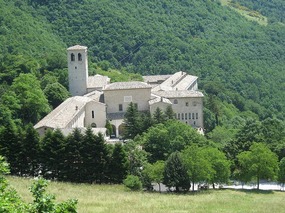
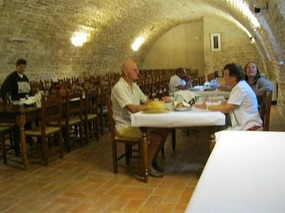
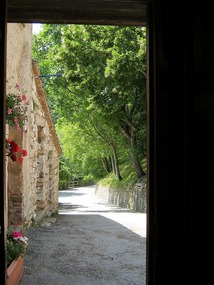


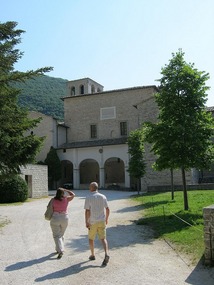





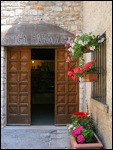
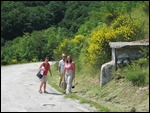
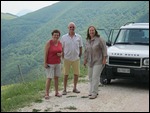
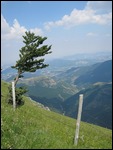
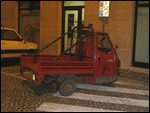
2025-05-23